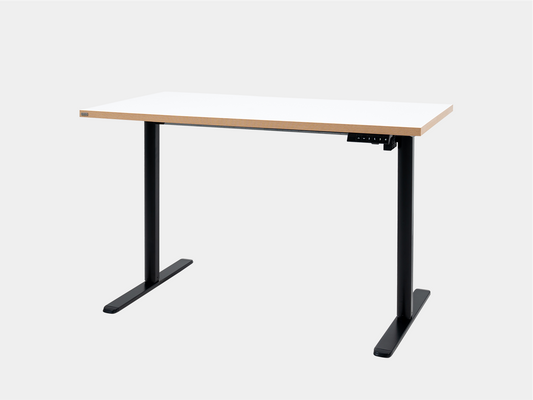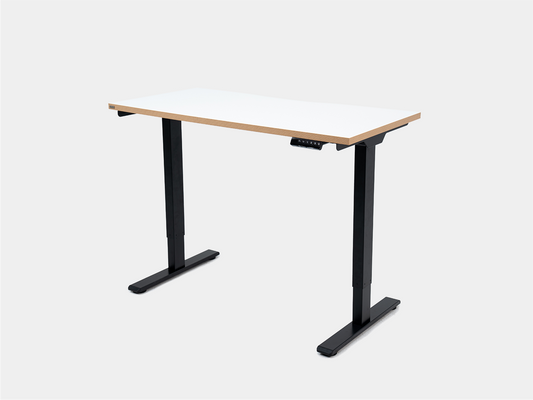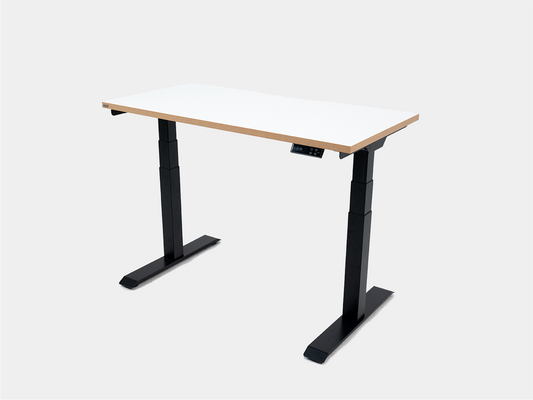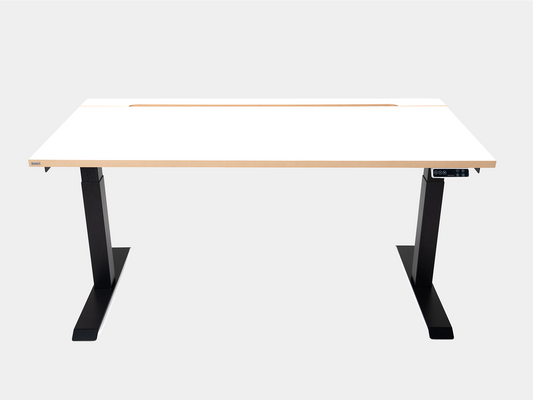Musculoskeletal conditions affect many adults worldwide. Children should be protected by proper ergonomics during childhood to avoid developing larger problems later in life. The best start is for parents and teachers to understand the major impacts and create an ergonomically sound environment.

The Importance of Ergonomics for Children
A 2020 study assessing the impact of ergonomics on children learning online during Covid‐19 lockdowns found:
- Students aged 10-17 experience increasing feelings of discomfort.
- Parents are not knowledgeable about ergonomics and issues related to ergonomic hazards.

Illustration of 2020 research data.
Teaching children about ergonomics early is just as important as teaching them about nutrition or exercise. Some of the benefits children receive when they are taught proper ergonomics include:
- Reduced risk of injury: Joint, back and neck strain and repetitive motion injuries such as carpal tunnel syndrome will be reduced.
- Increased Productivity: Can focus better on the tasks at hand, leading to improved productivity and efficiency in learning.
- Promote long-term health: Healthy habits at an early age can help prevent musculoskeletal disorders, obesity and other health problems related to poor sitting posture.
- Improve Mood: Physical discomfort often leads to negative emotions. Teaching ergonomics to children early on sets them up for good habits that increase positive emotions.
Set up an ergonomically sound environment for children
Here are some practical examples of child ergonomics and their benefits. They focus on the child's posture, the characteristics of the learning environment, and the use of backpacks.
1. Body
1.1. Upper body
Children often study with their heads tilted forward, elbows close to their bodies, arms extended too far forward, or wrists positioned incorrectly when holding a mouse. These actions can lead to poor posture, straining the neck and shoulders, causing pain and fatigue.
There are a number of factors you can intervene in to support your child, such as:
- Place the computer screen directly in front of the child at arm's length, so that it is not tilted left or right.
- Give your child a break every 30-60 minutes and encourage him or her to do some necessary stretching exercises.
- Adjust the height of the keyboard and mouse so that children do not have to reach for them.
- Teach children to move the mouse with their forearm, not just their wrist.
1.2. Lower body

Footrest for children.
Teaching your child to place their feet comfortably on the floor, knees at a 90° angle to the ground, and not allowing any objects to obstruct their lower body will help:
- Reduces pressure on the back of the thighs and helps keep the student's body aligned
- Avoid increasing pressure on the tissues and muscles in your back
- Prevents discomfort, stress, pain and fatigue in the body
Some ways to improve sitting comfort include:
- Use a footrest to provide your child with a stable surface to rest their feet on.
- Move the computer to a lower surface so that the child does not have to sit in a chair so high that their feet cannot touch the floor.
- Place a firm cushion/pillow under the child's bottom if a height-adjustable chair is not available.
2. Seat
2.1. Adjustability
If the seat is too big or too small, your child will be in a non-neutral position, causing him to tire more quickly and experience tension and pain throughout his body. In this case, you can:
- Equip your baby with an ergonomic chair with flexible adjustment capabilities
- Educate children about the importance of not using chair legs as footrests.
2.2. Backrest
The backrest helps maintain the natural curve of the child's lower back. A good backrest helps maintain the normal curve of the spine. In addition, a comfortable backrest reduces incorrect posture, giving the child a comfortable feeling all day long. On the other hand, without the right backrest support, the child may sit in the wrong position, leading to fatigue, pain and numbness.
There are several steps you can take to protect your child:
- Choose a chair with back support and adjustable height, if possible.
- Place a pillow or rolled towel behind your child's back to support their lower back.
2.3. Handrails
Armrests that are too high force children to raise their shoulders, causing pain and stiffness in the shoulders and neck. Armrests that are too low cause children to slouch and lean to one side. Armrests that are too wide force children to reach their elbows and lean forward, causing muscle fatigue in the shoulders and neck. On the other hand, standard armrests help redistribute the weight of the upper body and reduce forearm fatigue when typing.
Some measures to help improve this problem include:
- Choose a chair with comfortable armrests, if possible.
- Place a small piece of foam on top of the armrest of the chair.
- Replace armrests with adjustable armrests
3. Light

Set up the right light source.
Too much or too little light can hinder a child's learning process. A child's field of vision needs to be free of reflections and glare to ensure continuous concentration and not feel uncomfortable due to inappropriate lighting.
Here are some tips you can apply to optimize your light source:
- Try placing a mirror against your computer screen to determine which light source is reflecting from above or behind the screen.
- Have children sit facing a dark wall when working on the computer.
- Teach children to dim or turn off overhead lights and use desk lamps.
- Use black text on white background to improve contrast
- Install blinds or curtains to reduce window light
- Anti-glare screen protector for computers
4. Temperature
If the room is too cold, it can reduce a child’s flexibility, dexterity and judgment. It also increases the risk of muscle strain. Meanwhile, high temperatures can lead to fatigue, discomfort, headaches and reduced performance. In this case, you should equip your child with appropriate clothing for class and encourage them to tell the teacher if the temperature is too hot or cold.
5. Use a backpack

Children carry backpacks properly.
Carrying a backpack that is too heavy can cause neck, shoulder and back pain, which can negatively impact your child’s posture and spine. It can also lead to difficulty breathing and fatigue. Similarly, if your child wears a backpack on one shoulder, it puts more pressure on one side of their body than the other. So what can you do to help?
- You need to know about the importance of a wide backpack, padded straps for better weight distribution.
- Teach children to use belts if their backpacks have belts and to carry the backpack on both shoulders.
- If possible, choose to buy a backpack with wheels so that children do not have to carry heavy loads on their shoulders.
- Teachers should provide clear instructions about what materials students need to bring to class each day and parents should teach their children to be selective about which notebooks to bring and which are unnecessary.
Tips to protect children that parents and teachers need to know
1. Correct posture
According to experts, the ergonomic 90-90-90 rule that applies to adults also applies to children. Here's how it works:
- The child should sit up straight and form a 90° angle with the thighs.
- The thigh should lie flat on the bench, forming a 90° angle with the knee.
- The right foot should be flat on the floor and form a 90° angle with the shin.
To achieve the above rule, you will need a chair that allows for height and back adjustment. Also note that adult work chairs will not be suitable for children because they are simply too big, so you should consider buying an ergonomic chair specifically designed for children.
2. Suitable furniture

Ergonomic furniture for children.
There are so many different types of kids desks available today that making a choice can be challenging. Here are a few things to consider to help you make the best decision:
- Children grow up quickly and you need a desk that will fit them now and into the future. A height adjustable desk will help!
- A good desk allows them to move between sitting and standing positions. The flexibility of the table prevents them from sitting in one place for too long, which can be harmful to their health.
- Ergonomic chairs specifically designed for children will offer full adjustability, good padding, and are sturdy enough for even the most mischievous of activities.
3. Computers and accessories
As your child gets older, he or she will probably learn on a computer. It can be a desktop, laptop or tablet. Of these, desktop computers have a definite advantage in terms of ergonomics, as separate screens and the ability to use monitor stands or monitor arms make it easy for your child to adjust them to the most suitable position.
But there is one inconvenience, when your child is on the move or studying at school, a desktop computer is impossible. That's when a laptop comes in handy, of course with a suitable laptop stand!
Further reading
-
Ergonomics for school-age children
This scientific research paper covers everything related to child ergonomics, from outlining the importance of child ergonomics, potential risks to effective prevention solutions.
-
Ergonomics Basics for Children at Home and at School
Some researched figures, practical and easy-to-implement solutions are visually illustrated in this article.
Ergonomics for children is important and most of us adults often do not pay enough attention. Through this article, Epione hopes that you have learned the importance of ergonomics for children as well as are ready to accompany your child in applying ergonomics to the learning environment.















